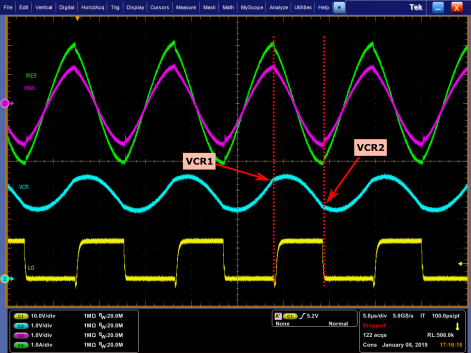SLUAAJ7 June 2022 UCC256402 , UCC256403 , UCC256404
- Abstract
- Trademarks
- 1UCC25640x Selection Guide
- 2UCC25640x Features Brief Overview
- 3UCC25640x Power Up Guidelines and Debugging Notes
- 4References
2.4.3 VCR Typical Waveform
 Figure 2-18 Ch1 – LO, Ch2 – VCR, Ch3 – ISNS, Ch4 – Resonant
Inductor Current
Figure 2-18 Ch1 – LO, Ch2 – VCR, Ch3 – ISNS, Ch4 – Resonant
Inductor Current- In Figure 2-18, an obvious transition can be noticed on VCR voltage at gate transition edges.
- Vcomp can be measured as difference between VCR values (VCR1-VCR2) during the switching instants.